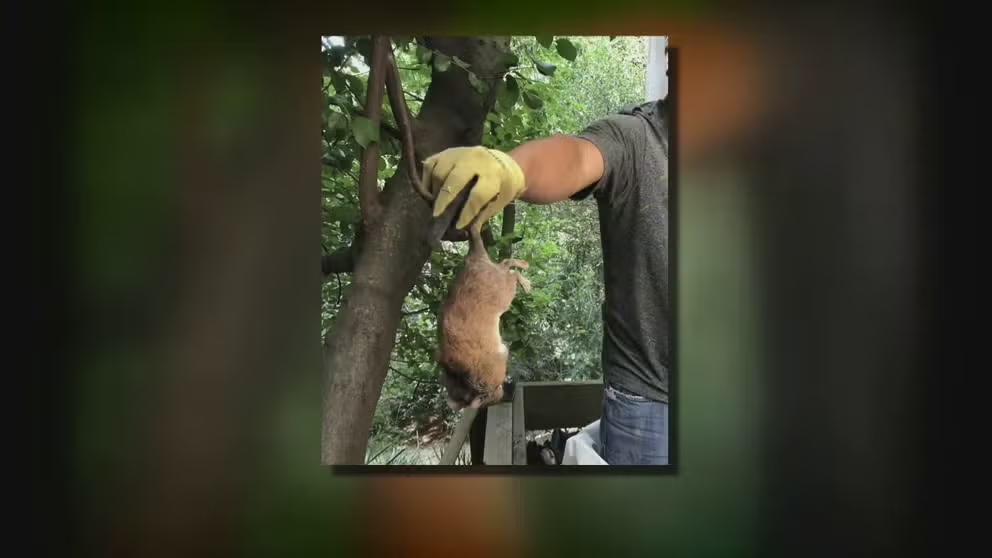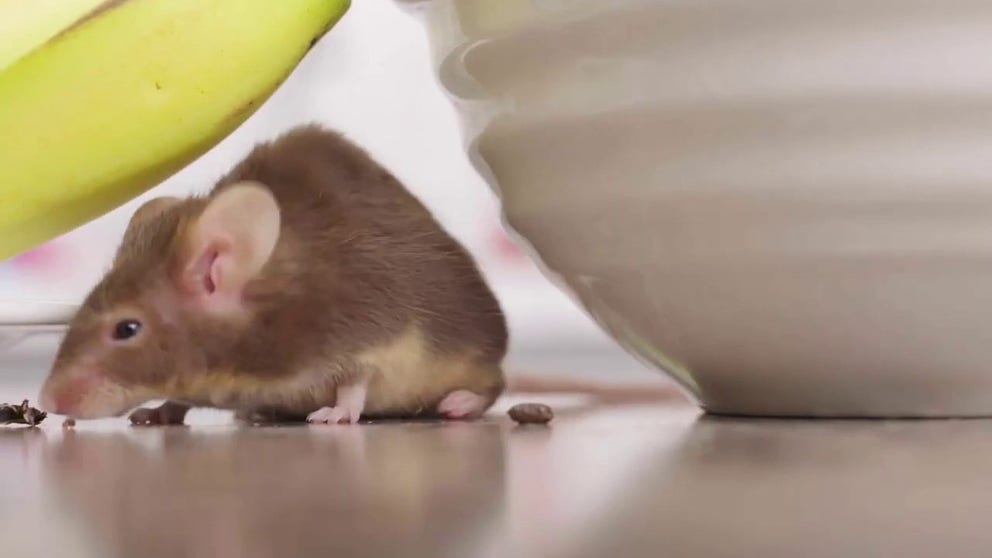Rats and mice move indoors for fall and winter: See most infested cities
'Tis the season when cooler weather drives rodents into homes. Find out what city is leading the rat race.
Rodents take shelter in homes during atmospheric river storm series
File from winter 2022/23: San Francisco Bay Area rats and mice took shelter in homes to get away from winter storms.
Temperatures are getting cooler as we head through October, and furry not-so-friends start heading into your home for heat and food.
"Each fall, mice and other rodents invade an estimated 21 million homes in the United States," stated Orkin, a pest control company, in a statement. "They typically enter homes between October and February looking for food, water and shelter from the cold."
Orkin crunched numbers and ranked the top 50 most rodent-infested cities. They used the number of new rodent treatments, both commercial and residential, from fall 2022 through summer 2023. They call it their "rattiest cities" list. For the ninth time in a row, Chicago "wins" the rat race.
STORMS ARE DRIVING RODENTS INTO CALIFORNIA HOMES
Most of the top 50 hit freezing routinely each winter. Although Los Angeles, San Diego, Tampa and Miami made the list.
Rodents carry disease
Those uninvited guests carry diseases that can make you and your family sick. Catching diseases like hantavirus and salmonella infections is as easy as breathing in contaminated air, touching contaminated surfaces, then touching eyes, nose or mouth and eating food contaminated by a rodent, according to the Centers for Disease Control.
Ticks, mites and fleas that rodents bring in or come in on your pet and then spread even more diseases. Plus, many of us have a sensitivity to rodent proteins that can lead to allergies, respiratory issues, asthma and asthma-like symptoms, according to the National Pest Management Association.
THESE HIDDEN INDOOR PESTS COULD TRIGGER ALLERGIES AND RESPIRATORY ISSUES
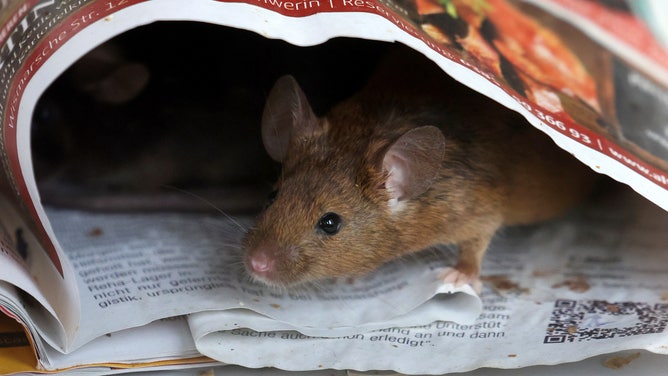
File: A mouse on a table.
(Bernd Wüstneck/picture alliance / Getty Images)
"Mice, in particular, are the biggest culprits of this," Mike Bentley, Director of Education and Training for the National Pest Management Association, said. "And house mice have two different proteins that they actually shed. One’s in the urine, and another is in the dander of their hair. And mice defecate a couple hundred times a day."
Mice and rats communicate through pheromones in urine and droppings.
"And so the result is you get these hundreds of drops of urine a day. And that, of course, piles up very quickly, and mice can reproduce very quickly," Bentley said. "So within a few months, you can have a major issue of a high number of mice defecating regularly inside your home. So the quantity of these airborne proteins builds up very quickly and start to have some pretty nasty side effects on your breathing."
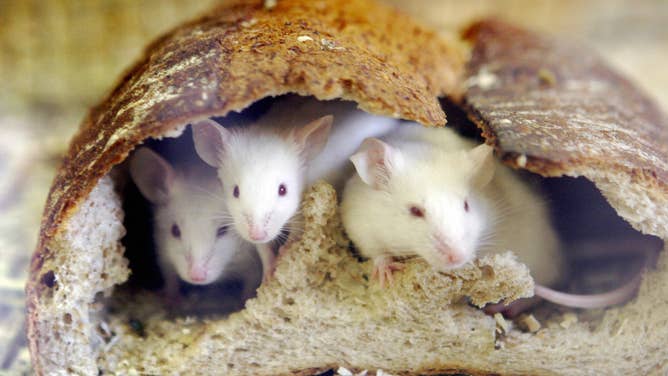
File: Mice peer out from a loaf of bread which they hollowed out and used the crust to live in.
(YOSHIKAZU TSUNO/AFP / Getty Images)
Bentley said that everyone has a sensitivity to protein allergens at different levels.
Constant gnawing is destructive
Rodents also damage homes.
"Rodents multiply swiftly, and when an infestation is left unattended, they can cause extensive damage to homes and yards," said Ben Hottel, an Orkin entomologist, in a statement. "Rats are capable of squeezing into spaces through holes as small as a quarter, which makes it especially important to seal cracks from the outside."
A mouse all over the house while you were sleeping
Mice are nocturnal so homeowners rarely see them crawling around homes. The National Pest Management Association had a mouse track fluorescent paint across a kitchen to show us all the places a mouse went while we were sleeping.
Mice enter through dime-size gaps in windows, ceilings and sewer lines. And once inside, enjoying the climate-controlled safety of your home, they "rarely venture outside again," wrote Orkin.
Oversize front teeth do a job on walls, electrical wires, water pipes and gas lines, according to Orkin. According to the CDC, gnawing gives the animals better access points in your home and keeps their teeth at an optimal length.
THE MOST TERMITE-INFESTED CITIES IN THE US

File: An acrobatic New York City rat.
(Dan Berman / FOX Weather)
Look for rodent infestations in your home
Orkin reports that there are a few very common signs of a rodent infestation.
- Droppings - Look where you store food: along baseboards, in kitchen cabinets and pantries, under sinks, inside chewed cardboard boxes and at the top of wall beams
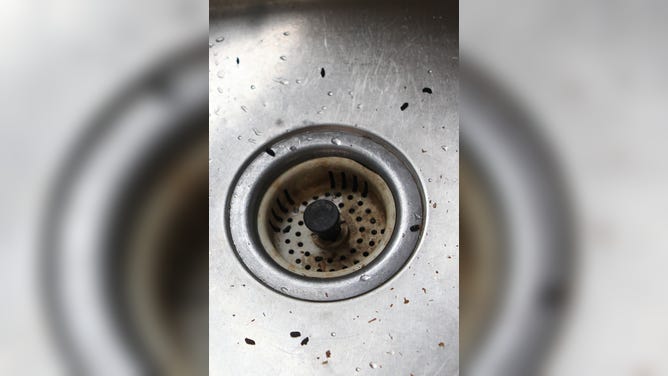
File: Rat droppings in a kitchen sink
(Liz Hafalia/The San Francisco Chronicle / Getty Images)
- Gnaw marks
- Nests - Look for shredded paper, cotton, packing materials and fabrics in dark, secluded areas
- Rub marks - Rats tend to leave dark grease and dirt marks along walls and floorboards
- Strange noises - Especially in the attic
